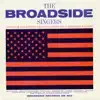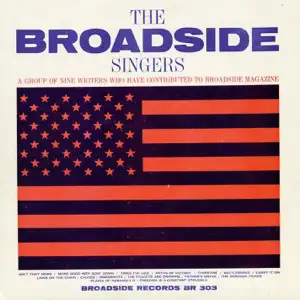


Acerca de Gil Turner
Preacher, actor, talent scout, and folksinger, Gil Turner qualified as a 20th century renaissance person. He authored the Civil Rights anthem "Carry It On" and was the first to record Bob Dylan's "Blowin' in the Wind" and "Don't Think Twice." Turner played the five-string banjo and 12-sting guitar, and he bragged about his ability to yodel. A central player in the American folk revival during the early '60s, he was perhaps more famous as a mover and shaker behind the scenes. Turner was born Gilbert Strunk on May 6, 1933, in Bridgeport, CT. His father was a German immigrant who worked as a machinist and sang with a Bridgeport group that toured the United State twice. His mother sang in the church choir, and Turner would inherit both his parent's love of music and a deep religiosity. As a teen, he even became a lay preacher in his hometown. After high school he attended the University of Bridgeport and later the Columbia School of Social Work, training to work with autistic children. He also worked with possible cures for rheumatoid arthritis, an illness he endured and that crippled the left side of his body. Turner played his most important role in the folk music scene in New York during the early '60s. He worked as the master of ceremonies at Gerde's Folk City in Greenwich Village, and there, he rounded up performers like Tom Paxton, Phil Ochs, Bonnie Dobson, and Mark Spoelstra to publish songs in Sis Cunningham and Gordon Friesen's Broadside magazine. Unlike the more general Sing Out!, Broadside featured topical songs on issues like war and civil rights. Thanks to Turner's help, many of these singers also recorded their first compositions for the Broadside label.nnOn one particularly memorable Monday night at Gerde's, Turner went to the club's basement where a young Bob Dylan said, "I got a song you should hear, man." He came closer, and Dylan sang "Blowin' in the Wind." Turner was so impressed he had the songwriter teach him the words and the chords, and introduced the song to the crowd at Gerde's that very night. In a short time, Turner also recorded the song with the New World Singers, and it was issued on Broadside Ballads Vol. 1 in 1962, a year before Dylan released the song.nnThrough the remainder of the 1960s, Turner continued to travel and perform throughout the United States and abroad. He returned to Carnegie Hall seven times, recorded material for the Library of Congress, and appeared on radio and television. His compositions were recorded by Judy Collins, Joan Baez, and Len Chandler, and he recorded albums for Columbia, Atlantic, and Folkways. In addition to his musical calling, he worked in the civil rights movement, joining the Student Non-Violent Coordinating Committee (SNCC) and the War Resisters League. In the early '70s Turner had been planning several projects, including playing a role in a segment of the TV series The Waltons when he died on September 23, 1974. ~ Ronnie D. Lankford, Jr.
Nosotros
Notas
